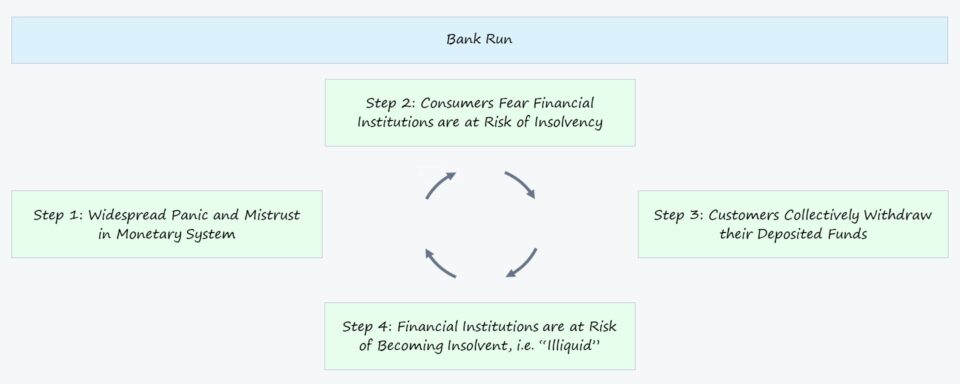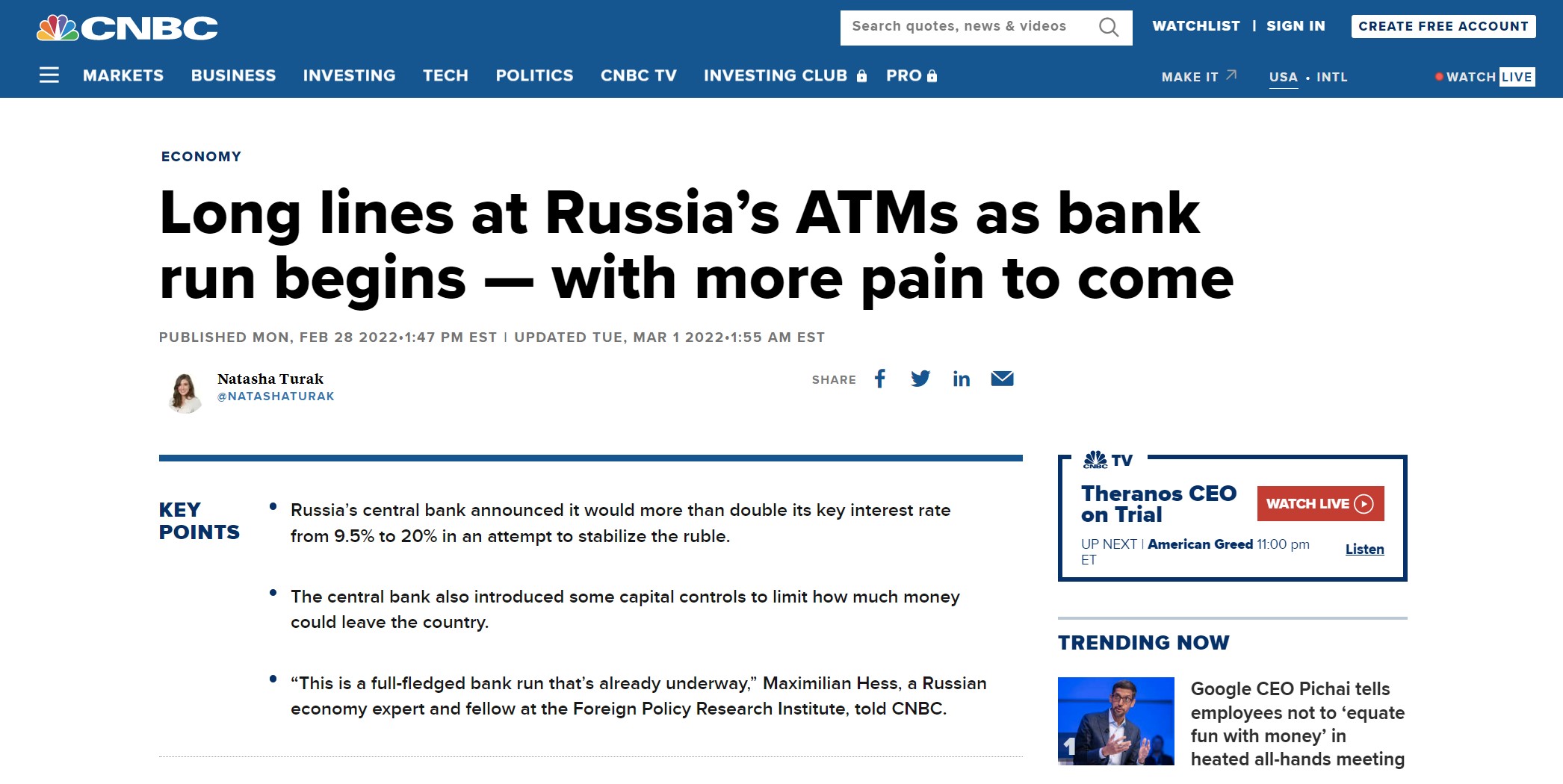What is a Bank Run?
A Bank Run occurs when customers start to collectively withdraw their funds from banks under the belief that the bank is at risk of becoming insolvent.

How Does a Bank Run Work?
The catalyst preceding a bank run is usually tied to a growing mistrust in a country’s monetary and banking system among customers.
Once news breaks of bank customers withdrawing their deposits in mass, a widespread panic can soon ensue and further accelerate the problem, resulting in even more customers withdrawing their funds.
If enough clients of a bank withdraw their deposits — in the worst-case scenario — the bank would likely collapse into default and cease its operations, i.e. the bank is now effectively depleted of funds.
The economic conditions in the country are usually bleak when a bank run occurs, with consumer spending and re-investments by corporates noticeably declining, resulting in less overall production (i.e. economic output) and higher rates of unemployment.
The general process of a bank run is as follows:
- Step 1 → Widespread Panic and Mistrust in Monetary System
- Step 2 → Consumers Fear Financial Institutions are at Risk of Insolvency
- Step 3 → Customers Collectively Withdraw their Deposited Funds in Mass
- Step 4 → Financial Institutions (Banks) are at Risk of Becoming Insolvent
What Causes a Bank Run to Occur?
Bank runs are intricate economic events triggered by a combination of factors. But the core issue at hand is normally a loss of confidence in the banking system and widespread fear among consumers.
- Fear of Insolvency → The root cause of most bank runs is the loss of confidence in the financial banking system or a particular bank. The reason can stem from rumors spreading from factual evidence or baseless claims, suggesting that a certain bank might face a financial shortfall shortly. For a real-world example, the collapse of Silicon Valley Bank (SVB) in March 2023 was one of the most significant bank failures since 2008.
- Unfavorable Economic Conditions → Economic downturns or recessionary fears can often precede bank runs. Amid such periods, external factors that contribute toward widespread concerns include rising interest rates, banks incurring losses on their portfolios, high inflation (CPI), and a weak economic outlook.
- Liquidity Concerns → If a bank is facing issues with liquidity, such as fulfilling its near-term cash obligations, word can quickly spread and cause rumors that the bank could soon be insolvent.
- Negative Press Coverage → The negative coverage of the financial health of a bank is often the nail in the coffin that precipitates a bank run. Once the general public becomes aware of the risk, a “run on the bank” is bound to ensue, i.e. herd-like behavior to avoid losing their deposits and savings.
How to Prevent Bank Runs
In order to reduce the probability of such occurrences where the banks cease to function from insufficient liquidity, the Federal Deposit Insurance Corporation (FDIC) was formally established by Congress under the 1933 Banking Act (Glass-Steagall) to assure consumers about the safety of their funds and stabilize the economy.
Bank runs are a significant threat to the stability of a country, so protection from bank losses (and ensuring consumers trust financial institutions) are paramount to a functioning society.
Because of insured backing by the FDIC, such events are now uncommon in the United States (or at least, far less of a concern compared to in the past), since customers are generally aware of the insured backing from the FDIC.
Yet certain consumers may still opt to remove their funds from banks due to mistrust in the system, so the risk of a potential occurrence is never completely out of the picture.
Part of the reason why bank runs can be very concerning is that most banks do not hold the entirety of their customer deposits on-site. In fact, only a relatively small proportion of total customer deposits can be physically kept within the bank because of federal regulations.
Bank Run Example: Russian Ruble (Russia and Ukraine War)
Following the invasion of Ukraine by Russia, the ruble dropped dramatically in reaction to the news of sanctions levied on Moscow by the EU and the U.S.
Soon after, Russia’s central government announced interest rate hikes and political uncertainty, and a bank run was underway.
The Russia-Ukraine war and the subsequent international sanctions triggered the ongoing bank run in Russia.
However, the unique aspect of this particular example is that it essentially represents mistrust in the central bank of Russia itself, rather than the banks.
Hence, there has been much interest in the country around cryptocurrencies (i.e. digital currencies as a store of value).
So instead of mistrust in the banking system, the concern among consumers in Russia is directed at the government, which is arguably far more difficult to recover from with broader societal implications.
Russian Bank Run at Sberbank Europe (CNBC)
“Lines at ATMs snaked down sidewalks and around buildings in Moscow and at Russian banks in Europe as depositors rushed to withdraw cash. Sberbank Europe, which is owned by Russia’s state-run Sberbank, says it has experienced significant outflows of deposits in a very short time.”
“Long Lines at Russia’s ATMs as Bank Run Begins” (Source: CNBC)







